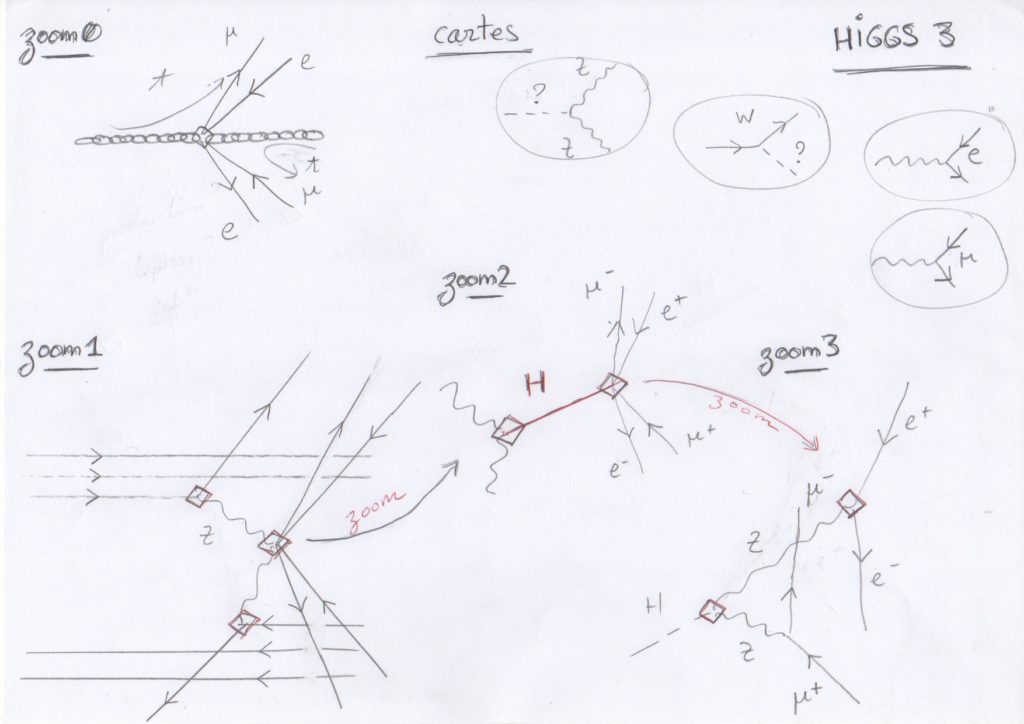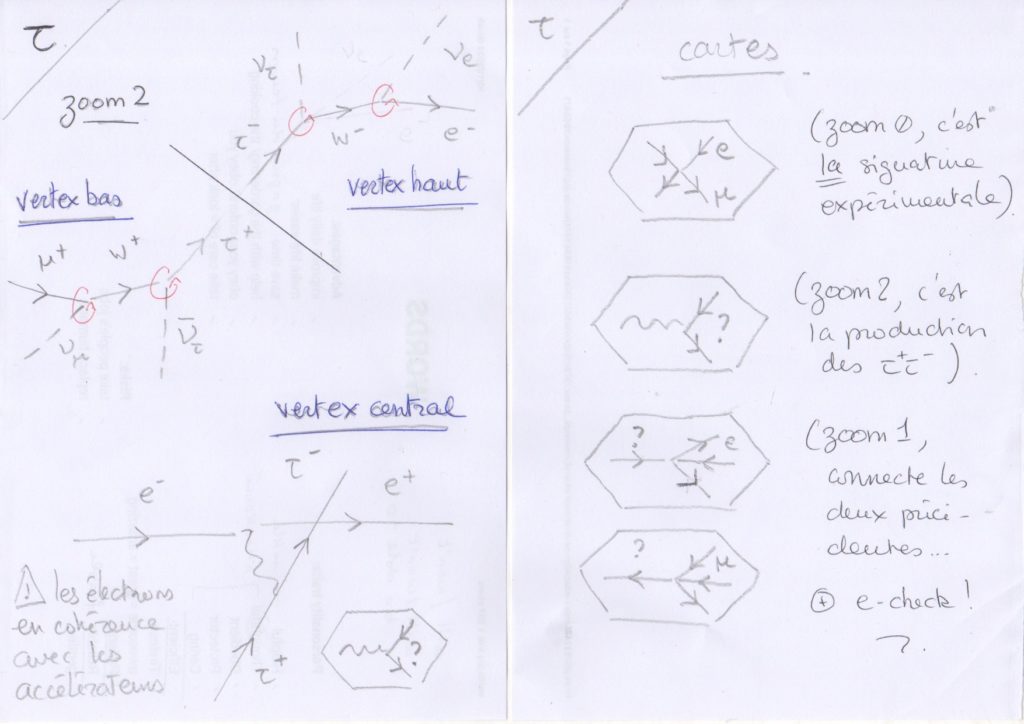#7 Discovering particles

In Exographer, you’ll spend a (small) part of your time searching for new elementary particles in images closely resembling those manipulated by physicists at CERN or elsewhere. And you don’t even need any prior knowledge! The game is designed to help you gradually get to grips with these seemingly complex concepts.
In the example above, a cosmic ray cascade, you’ll need to find a muon and an antimuon, thanks to the chain of decay of the pion into a muon and then an electron. But you’ll just have to let the visual aspect guide you, and to use your selection tools, in order to achieve this.
To design these puzzles, our scientific director, Raphaël Granier de Cassagnac, took direct inspiration from the history of particle physics. In fact, muons were first observed in cosmic rays, and this came as quite a surprise. Other experiments, such as the discovery of the neutrino by Reines and Cowan (check it on wikipedia), are hidden behind most of the levels.
To design the various analyses, game designer Pierre-Alban Ferrer drew on this history and came up with tools for selecting different properties of the particles and their interactions. Together with Raphaël, they exchanged diagrams such as the one below, before implementing these puzzles and testing them on novice players to check progress and learning.

At the end of the game, the player finally discovers the Higgs boson, by solving the four decay modes that led to its discovery. Above, the Higgs boson decays into four leptons, via a pair of Z bosons. It’s up to you to find all these particles!
Bonus! While we were designing the game, our intern Basile de Lamberterie designed a stand-alone application that lets you make a few collisions, disintegrate a few particles, and contemplate cosmic rays. This generator was very useful for visualizing interactions, and is now available for all here on itch.io.
On the other hand, the idea of procedural interaction generation had to be abandoned in favor of total control over the complexity offered to players.

